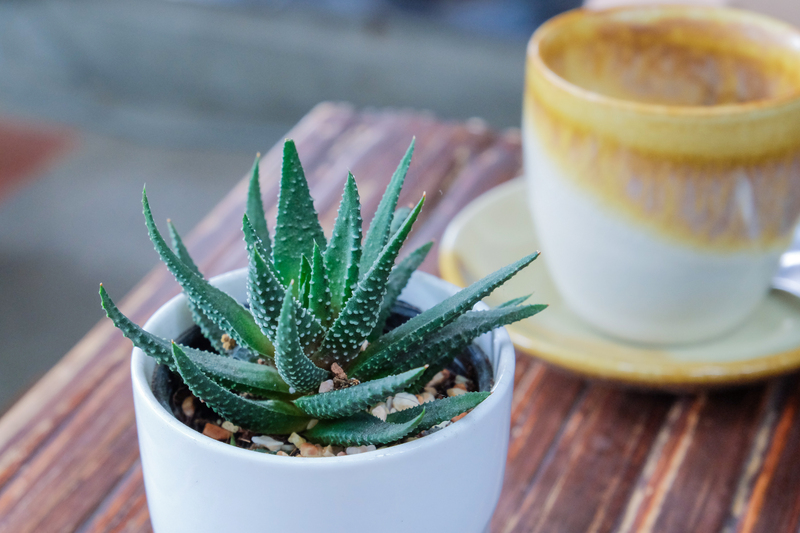Three Vital Tips for Effective and Lasting Weed Control
Posted on 14/08/2025
Three Vital Tips for Effective and Lasting Weed Control
Weeds are a persistent challenge for gardeners, homeowners, and landscapers everywhere. Achieving effective and lasting weed control is crucial to maintaining the health and beauty of your garden or lawn. Not only do weeds compete with your plants for vital nutrients, but they can also attract pests and diseases, undermining your landscape's integrity. In this comprehensive guide, you'll discover three essential tips to conquer weeds for good, ensuring a lush, thriving, and weed-free property.

Why Is Weed Control So Important?
Before diving into the practical advice, it's crucial to understand why proper weed management is a necessity. Weeds can:
- Compete with desired plants for water, nutrients, and sunlight.
- Spread rapidly, overtaking gardens and lawns in a single season.
- Attract unwanted pests and pathogens that can harm your plants.
- Reduce property value by undermining curb appeal.
- Trigger allergies and cause discomfort for homeowners and their pets.
Tip 1: Proactive Prevention Is Key to Successful Weed Management
The most effective way to control weeds isn't by fighting them after they've taken root, but by preventing their growth in the first place. Prevention is the cornerstone of lasting weed control, and it starts with understanding how and why weeds invade your yard or garden.
Mulching: The Ultimate Barrier
One of the most reliable weed deterrent methods is using mulch. Mulching serves multiple purposes:
- Suppresses sunlight: Prevents weed seeds from germinating.
- Retains moisture: Helps your plants outcompete weeds.
- Improves soil health: Organic mulch breaks down and enriches your soil.
Landscape Fabric: Stopping Weeds at the Source
Installing landscape fabric beneath mulch offers an additional protective layer that prevents weed seedlings from breaking through. Here's how to do it:
- Clear the area of all existing weeds and debris.
- Lay the fabric flat and overlap edges to prevent gaps.
- Cover with 2-4 inches of mulch.
Maintain Dense Planting
Strategic planting is a form of natural weed control. For lawns, maintaining a thick, healthy turf means less light, water, and nutrients are available for weeds. In flower beds or vegetable gardens, spacing plants properly and filling gaps with ground covers like creeping thyme or clover will create a weed-suppressant canopy.
Tip 2: Targeted Weed Removal for Long-Term Results
Even with the best preventative approach, some weeds will inevitably break through. The secret to lasting weed control is to address these invaders quickly and effectively. The faster you act, the less likely weeds are to multiply.
Hand-Pulling and Hoeing
For spot weeding, nothing beats a good pair of gloves and a sturdy hoe. Hand-pulling ensures you get the root--the most important aspect for enduring weed control. Use a tool like a dandelion fork for deep-rooted invaders.
Tips for Effective Weed Removal:
- Remove weeds after rain or watering when the soil is soft for easy root extraction.
- Make sure you extract the entire root system to prevent regrowth.
- Dispose of removed weeds immediately--don't leave them on the ground to re-root or spread seeds.
Spot Treatments with Herbicides
While organic weed control methods are preferable, sometimes persistent or pervasive weeds require targeted herbicide application. Modern selective herbicides can be used to eliminate weeds in lawns or garden beds without harming surrounding plants. Always:
- Read the instructions carefully for appropriate application and safety.
- Apply only to the target weeds.
- Avoid treating windy days to prevent drift onto desired plants.
The Importance of Timing
Addressing weeds while they're young and before they set seed is crucial for controlling weed populations long-term. Aim to do a major weeding session early in the growing season and repeat as necessary.
Tip 3: Foster a Healthy Landscape for Ongoing Weed Resistance
A resilient, healthy lawn or garden is your best defense against weeds. Weedy environments tend to thrive in poorly maintained or bare areas. By focusing on the overall health of your landscape, you greatly reduce the likelihood of future invasions.
Feed and Water Adequately
Proper fertilization and watering encourage robust plant growth, which naturally suppresses weeds by outcompeting them. Follow these tips:
- Test your soil regularly to maintain the right nutrient balance.
- Water deeply but less frequently to promote deep root systems in your plants.
Mow and Prune Strategically
For lawns, mow at the right height for your grass species--usually about 3 inches. Taller grass shades soil and helps prevent weed germination. Consistent pruning of flowers and shrubs also reduces open spaces where weeds can sprout.
Address Bare Spots Promptly
Open soil is a prime real estate for weed seeds. Quickly reseed or replant bare patches in your lawn or garden beds. Consider using fast-growing ground covers or cover crops in vegetable gardens to fill gaps and keep weeds out.
Bonus: Sustainable Weed Control Practices
If you're committed to organic gardening or eco-friendly landscaping, sustainable weed control methods are available. Here are several effective strategies to reduce weed growth over time:
- Crop rotation: Rotating crops in your vegetable garden disrupts weed and pest cycles.
- Companion planting: Certain plant pairings can naturally suppress weeds.
- Solarization: Using clear plastic sheets over soil during hot months to kill weed seeds and pathogens via solar heat.
Common Weed Control Mistakes - And How to Avoid Them
Even the most experienced gardeners can make mistakes that undermine otherwise effective weed management. Avoid these common pitfalls:
- Letting weeds go to seed: A single dandelion can produce thousands of seeds. Remove weeds before they flower.
- Using too little mulch: Thin mulch won't smother emerging weeds--apply at least 2-4 inches for best results.
- Ignoring soil health: Poor soil fosters weak plants, which are more vulnerable to being overtaken by weeds.
- Overusing herbicides: Chemical treatment should be a last resort; overuse can damage your soil microbiome and harm pollinators.
- Neglecting regular maintenance: Weed control is an ongoing effort. Frequent inspections and quick action are essential for lasting results.

Summary: Achieving Lasting Weed Control in Your Garden or Lawn
Effective and lasting weed control is more than just a seasonal chore--it's a comprehensive approach that blends prevention, targeted removal, and overall landscape health. By following these three vital tips for weed control--proactive prevention, timely removal, and fostering resilient landscapes--you'll enjoy a lush, vibrant, and weed-free setting throughout the year.
Remember:
- Start with prevention--mulch, dense planting, and landscape fabric are your first line of defense.
- Remove weeds promptly and completely, using the right tools and techniques.
- Keep your garden healthy--healthy plants naturally keep weeds at bay.
With patience, attention, and the right strategies, you can master lasting weed management and keep your grounds thriving for years to come.
Frequently Asked Questions About Weed Control
1. What's the best time to apply mulch for weed prevention?
The best time to apply mulch is in early spring before weeds have a chance to sprout. You can also refresh the mulch layer in summer and fall as needed.
2. Are there natural alternatives to chemical herbicides?
Yes! Vinegar, boiling water, salt, and corn gluten meal can help control weeds sustainably. Always use caution as some remedies can harm desirable plants.
3. How often should I inspect my garden for weeds?
Regular inspections--at least once a week during the growing season--ensure prompt action and effective, long-term weed control.
Start implementing these vital tips for weed control today and transform your outdoor space into a thriving, weed-free paradise!
```


